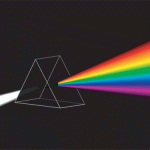
Retirement is still a long way off for our galaxy. Image: Shutterstock.
With most of its star formation years behind it, the Milky Way is suffering from a mid-life crisis.
Galaxies usually fall into one of two categories- energetic blue galaxies that are forming new stars or slowly dying red galaxies. But Mr Simon Mutch, Dr Darren Croton and Dr Gregory Poole from Swinburne University have shown that our galaxy doesn’t fit into these categories.
Instead, it’s a rare ‘green valley’ galaxy. Dr Croton says green galaxies are midway along an evolutionary track, “between “blue and star forming” and “red and dead”. Basically, green galaxies are understood to be slowly dying, and that makes them special.”
This is the first time scientists have compared the Milky Way’s colour and star formation rate to those of other galaxies. Dr Croton says that determining the state of our own Galaxy, while we’re stuck inside it, is very difficult to do. “What we’ve done is take the best measurements of the Galaxy from the literature in the past 20 or so years and compile them into a big picture view of the Milky Way’s current state.
“There are large errors on these measurements (because they’re hard to do), but the properties we’ve looked at all point to the Milky Way and Andromeda both having global colours that we’d classify as ‘green’.”
But the Milky Way hasn’t slipped into old age yet. Stars are still forming at a rate of 1/2 to 1 solar masses per year (that’s one new “Sun” or less every year). However, according to Dr Croton, this is not a lot for a galaxy as big as the Milky Way. “The total light we see coming from all the stars in our galaxy is dominated by the older ones.
“If the Milky Way continues to behave this way then the amount of new life occurring in the Galaxy will slow to a noticeable trickle. This will take a few billion years to happen.”
“The merger with Andromeda in 5 or so billion years will liven things up a lot, and any residual hydrogen gas in both galaxies should provide a new burst of life (a star-burst). But it probably won’t be too significant, and will certainly be short lived.”
The violence of the merger will also lead to the inevitable retirement of the Milky Way as a “red and dead” elliptical galaxy. But Dr Croton says about half the stars in the Universe are in such galaxies many of these continue to lead very interesting lives in their retirement, such as M87 in the Virgo cluster. “At least we’ll be in good company!”






